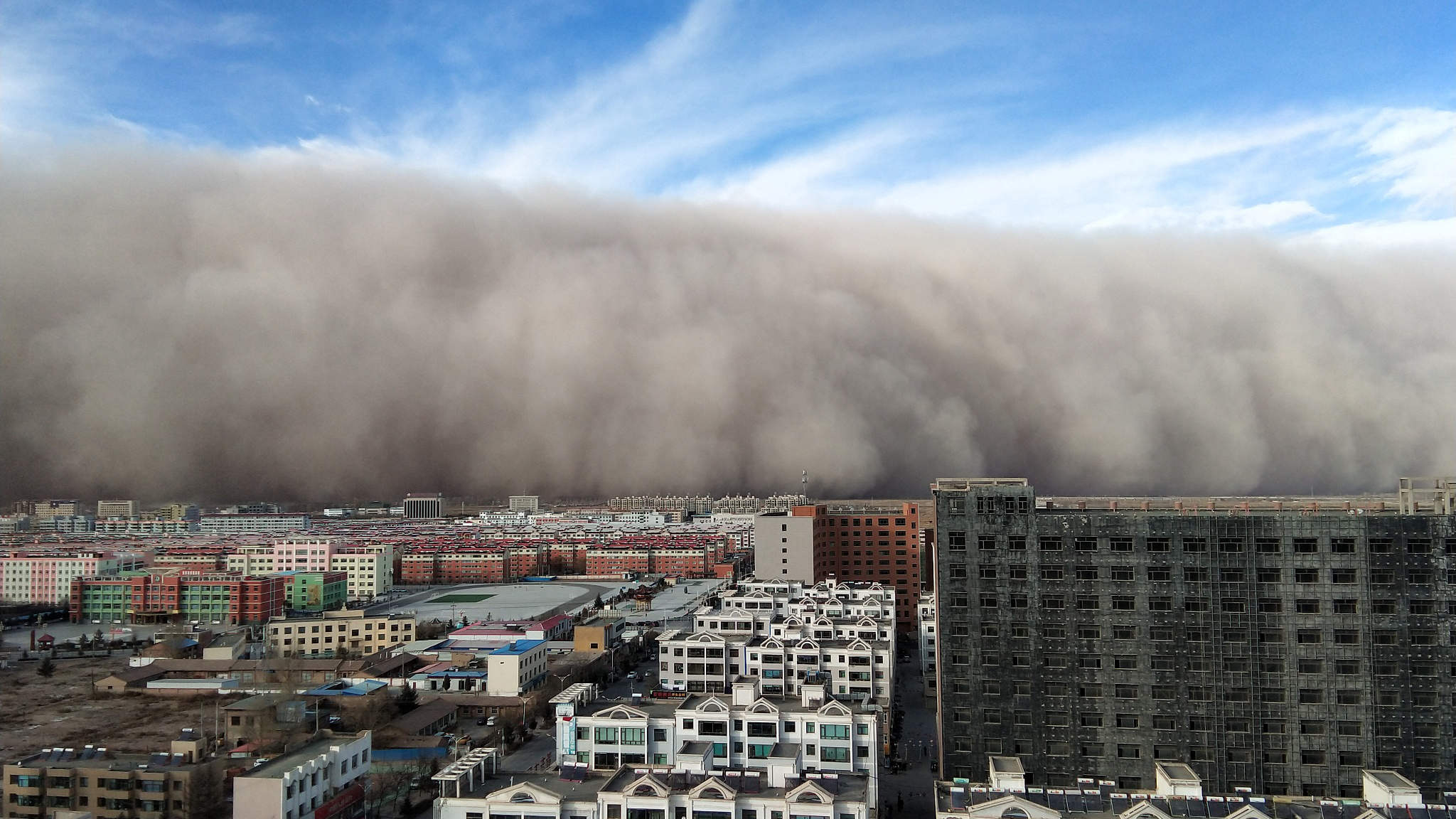On November 25, a huge sandstorm hit China's northwestern city of Zhangye with a 100-meter-high sand wall. Strong winds whipped up sand and dust from the nearby Gobi Desert and soon the city of 1.2 million people was almost totally engulfed in the dust. The visibility was reduced to less than 10 meters and an emergency response plan was activated by local authorities.
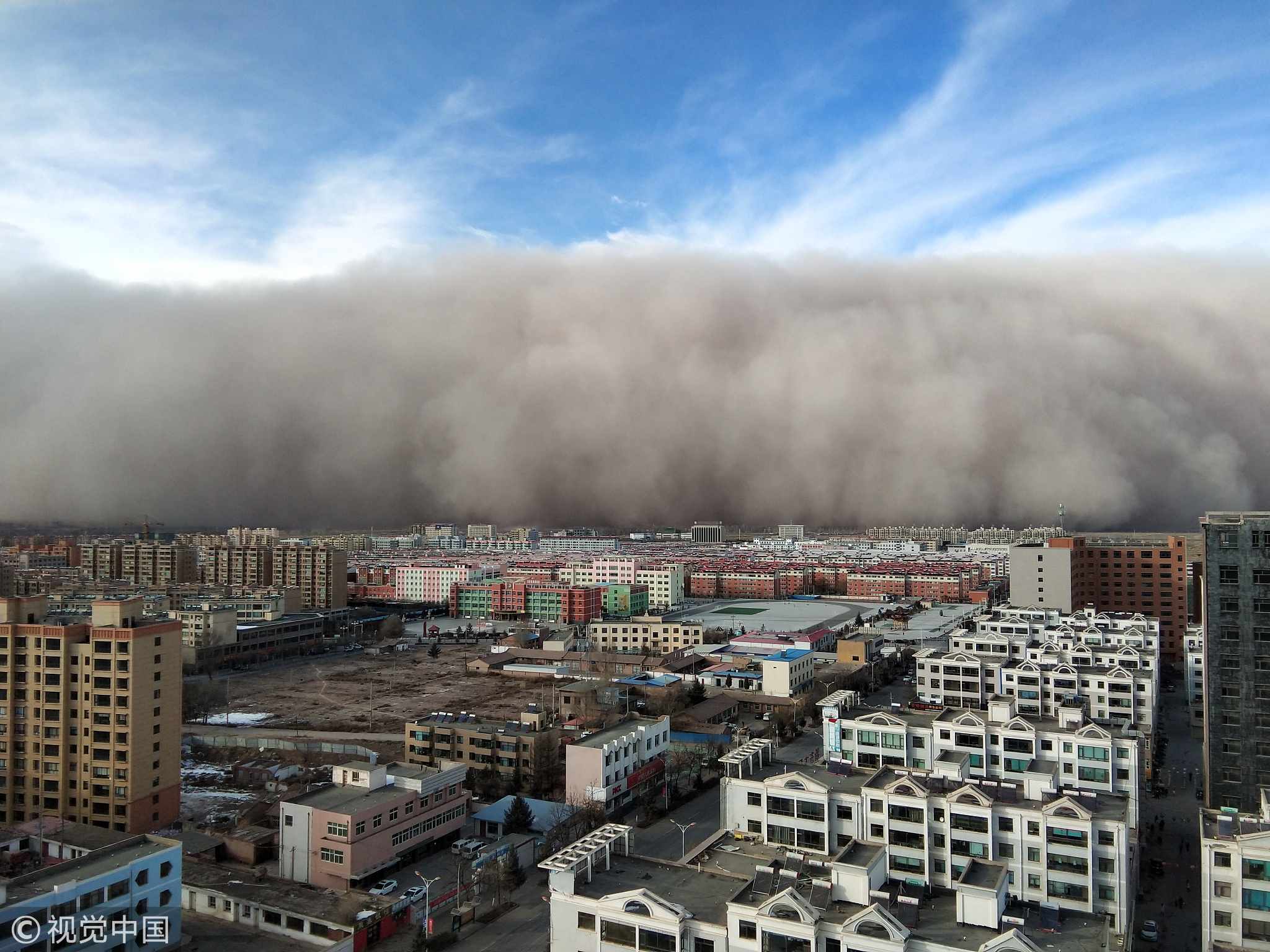
A huge sandstorm hits China's northwestern city of Zhangye on November 25, 2018. /VCG Photo
A huge sandstorm hits China's northwestern city of Zhangye on November 25, 2018. /VCG Photo
The horrifying sandstorm not only brings the dust but also puts the problem of desertification once again under the spotlight.
Desertification is the gradual transformation of habitable land to arid land, usually caused by climate change and/or the improper use of land. It is one of the most important environmental challenges that the world faces today.

Agadez, Nigeria, was hit by a huge sandstorm in June 2018. /VCG Photo
Agadez, Nigeria, was hit by a huge sandstorm in June 2018. /VCG Photo
According to the United Nations Convention to Combat Desertification (UNCCD), more than 100 countries – principally in the Sahel, Central, and East Asia are affected by desertification.
In China, a country undergoing fast economic development but with nearly 20 percent of its land area as desert, desertification has become one of the country's most urgent and important environmental problems.
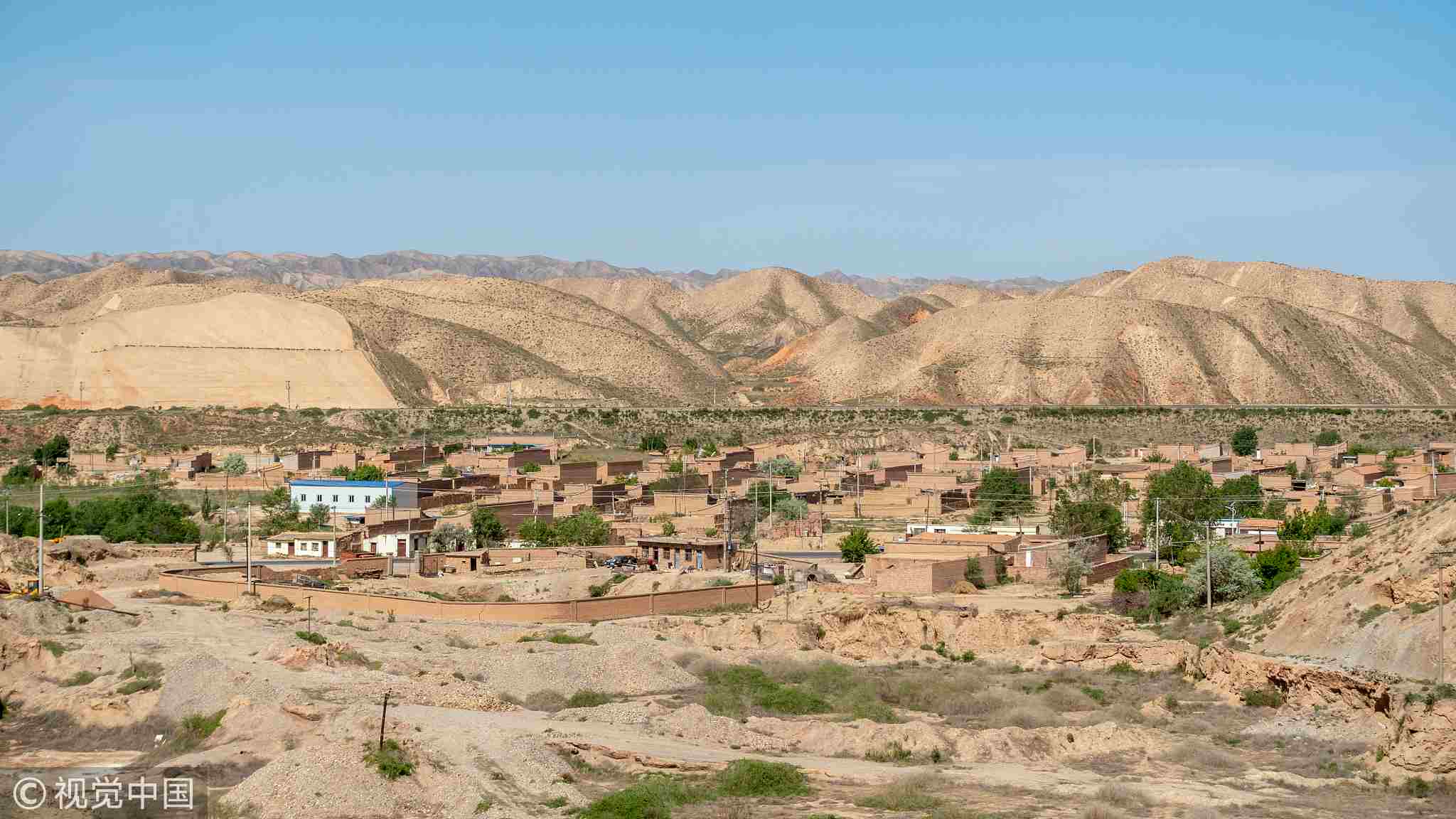
A village lies in the heart of the Gobi Desert, China. The Gobi Desert covers parts of northern and northwestern China, and southern Mongolia. /VCG Photo
A village lies in the heart of the Gobi Desert, China. The Gobi Desert covers parts of northern and northwestern China, and southern Mongolia. /VCG Photo
With a growing population and drier climate, the challenges also increase. The three most serious desertification areas in China are the western Horqin sandy land, the Maowusu Desert and its surrounding areas as well as the western and southern Tarim Basin.
Compared with 1975, the desert area of China has expanded 21,000 square miles (54,390 square kilometers) – approximately equal to the size of Croatia. Many so-called "ecological refugees" have been relocated because of desertification.
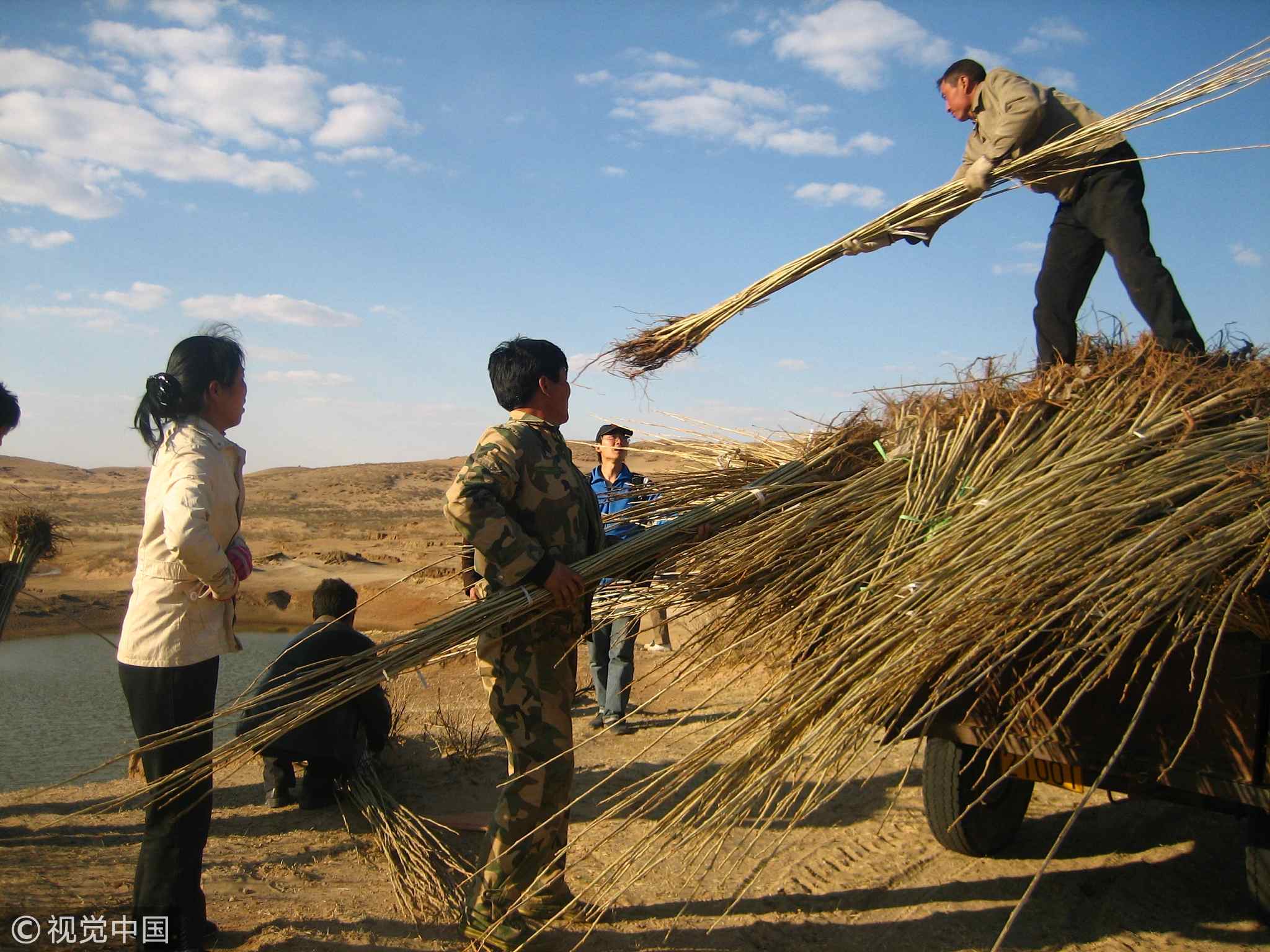
Volunteers participate in a sand control project in the Horqin sandy land. /VCG Photo
Volunteers participate in a sand control project in the Horqin sandy land. /VCG Photo
In spite of this, China is known for its continuous effort to slow or reverse desert growth. The UNCCD even calls China "a champion in the fight against desertification."
One of the country's major initiatives to restore land is the Three-North Shelterbelt program, also known as the "Green Great Wall of China." It is designed to prevent the desert from encroaching into the grassland and farmland by planting trees.
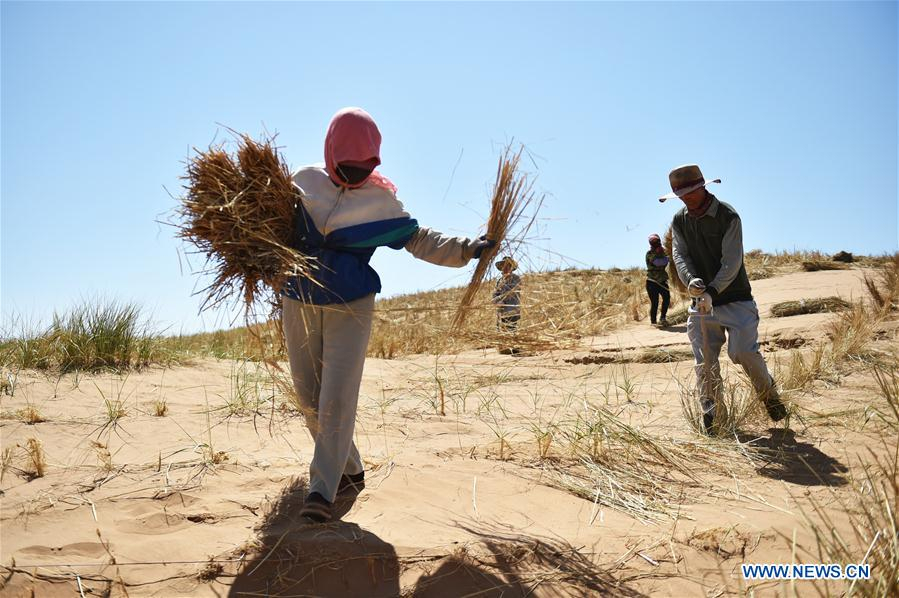
Residents make straw checkerboard sand barriers in the Tengger Desert in the Shapotou District of Zhongwei City, northwest China's Ningxia Hui Autonomous Region. /Xinhua Photo
Residents make straw checkerboard sand barriers in the Tengger Desert in the Shapotou District of Zhongwei City, northwest China's Ningxia Hui Autonomous Region. /Xinhua Photo
However, the effectiveness of the measure has been controversial. The selection of trees in violation of natural laws for afforestation may cause further deterioration of the environment. For example, millions of poplar trees in China's northwestern Ningxia Hui Autonomous Region were lost to a single disease in 2000.
Later, with more experience gained, local organizations started to grow different plants in the desert so the protection forest can have stronger resistance to pests.
Other advanced scientific methods are also being adopted including sustainable agricultural development. Therefore, the situation has been improved significantly. The distance between the desert and Zhongwei City has expanded to more than 20 kilometers.
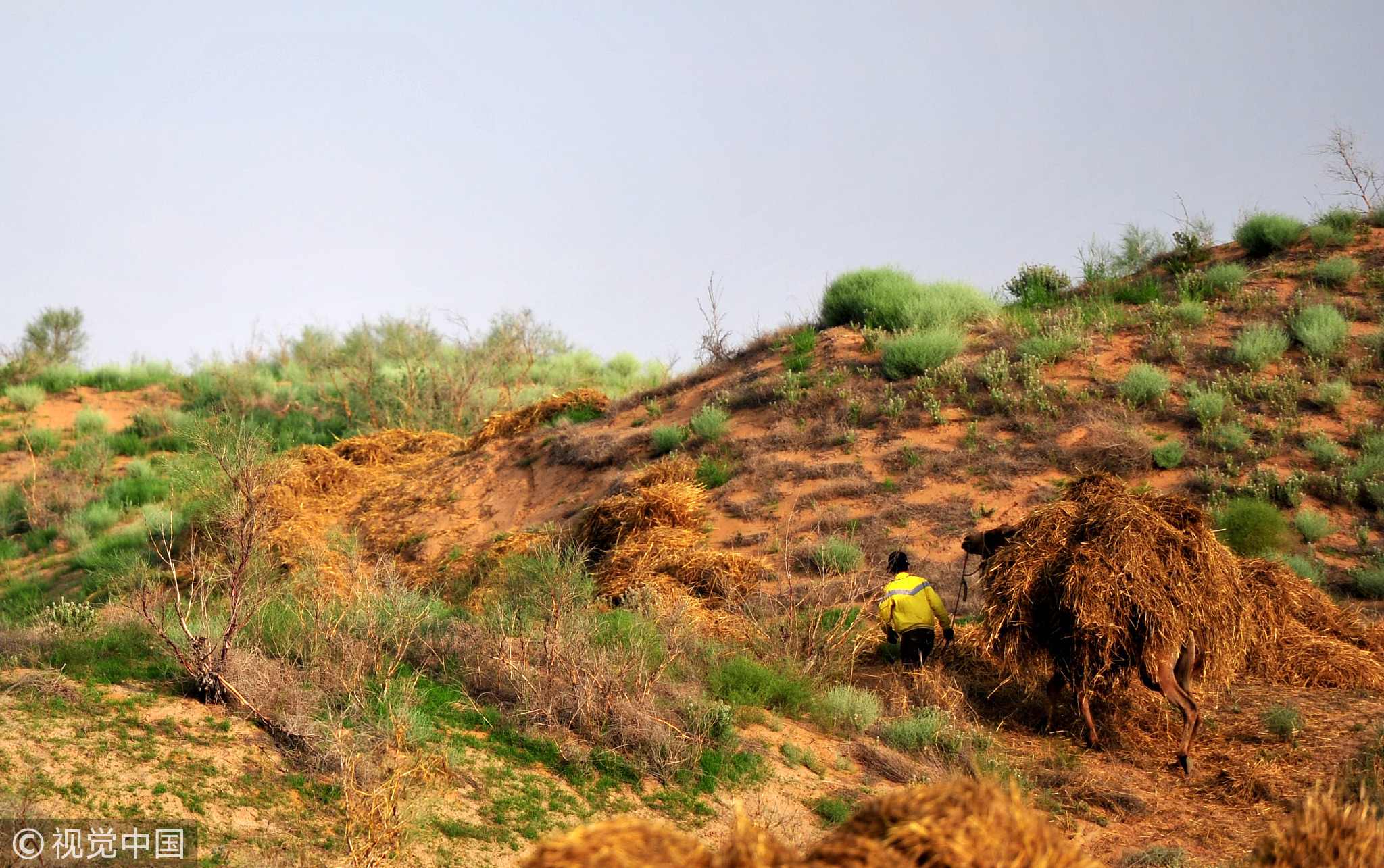
Shapotou sand control project, Ningxia Hui Autonomous Region. /VCG Photo
Shapotou sand control project, Ningxia Hui Autonomous Region. /VCG Photo
The other project launched to combat desertification is called the National Action Program, which has encouraged many private organizations to participate in desertification combat via public-private partnerships.
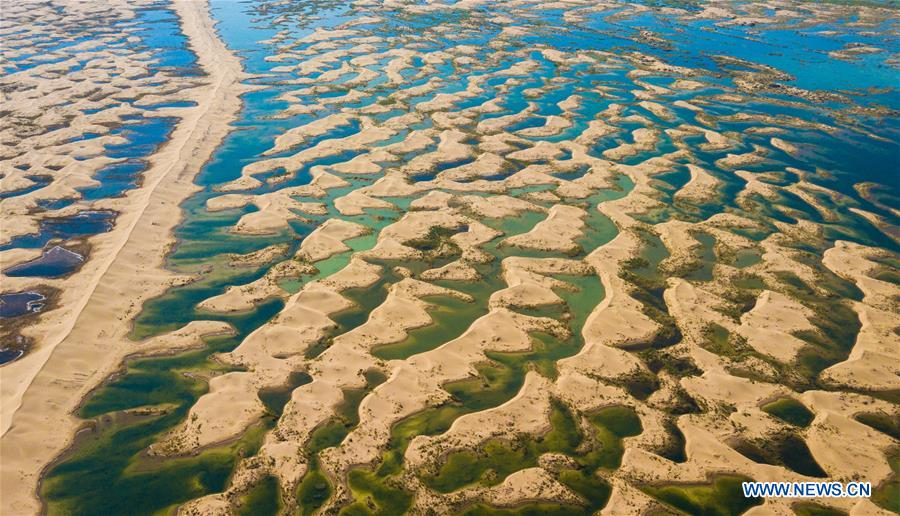
Wetlands formed by the Yellow River during a flood period in the Kubuqi Desert in Hangjin Banner, north China's Inner Mongolia Autonomous Region, June 9, 2018. /Xinhua Photo
Wetlands formed by the Yellow River during a flood period in the Kubuqi Desert in Hangjin Banner, north China's Inner Mongolia Autonomous Region, June 9, 2018. /Xinhua Photo
For instance, in the world-famous Kubuqi Desert greening project, not only the government but also the private sector, schools and local communities all contribute to the project.
Thanks to the project, about 6,460 square kilometers of the Kubuqi Desert have been reclaimed in the last 30 years and more than 100,000 people have been lifted out of poverty.
Today, the Kubuqi Desert is not just a good example of the country's success in alleviating desertification, but also a well-known tourist spot.
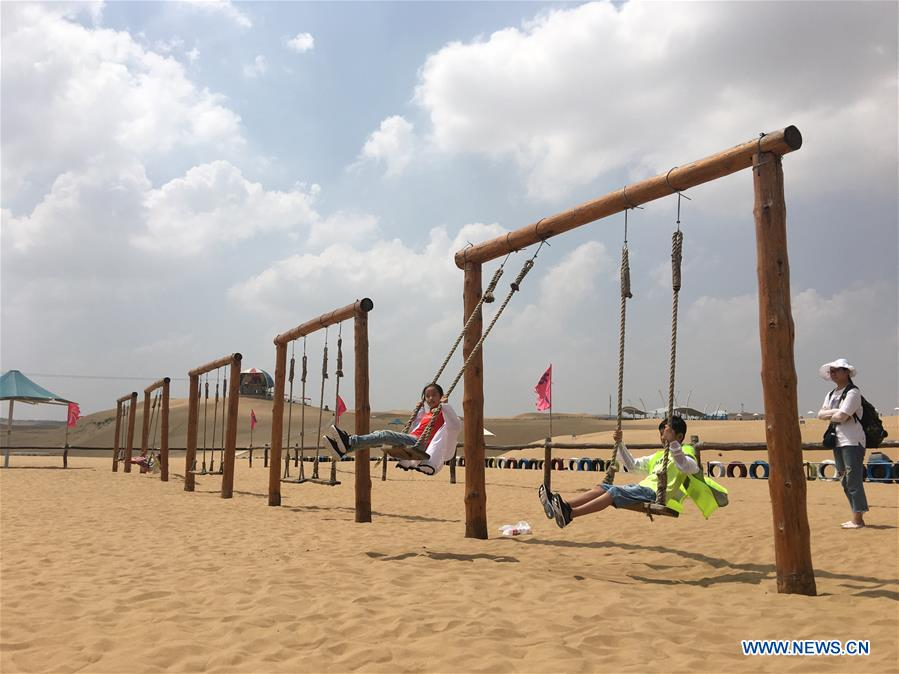
Tourists have fun at a scenic spot in the Kubuqi Desert in Erdos, north China's Inner Mongolia Autonomous Region. / Xinhua Photo
Tourists have fun at a scenic spot in the Kubuqi Desert in Erdos, north China's Inner Mongolia Autonomous Region. / Xinhua Photo
On top of this, in 2016, China also launched the Belt and Road Joint Action Initiative to combat desertification across the Silk Road region. Many international scholars have attended training programs about desertification control in China.
Kabo Mogotsi, a Botswanan official of agriculture told Xinhua News, "I really cherish this opportunity to study in China. I hope for more collaborative efforts against desertification between our two countries."
According to statistics, an average of 4,400 square kilometers of China's desertified land have been restored annually since 2000. The pace may be slow, but the expansion of some deserts has been reversed.

